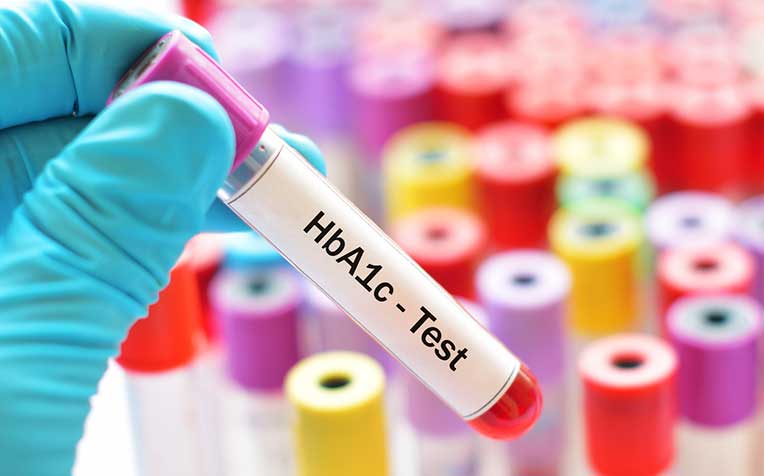
Hypoglycaemia and HbA1c - are HbA1c levels a good predictor of hypoglycaemia (low blood sugar)?
Meeting the HbA1c (haemoglobin A1c) target isn’t enough to control blood sugar levels of diabetes patients. Avoiding frequent and sizeable changes in blood sugar levels is also important if complications like hypoglycaemia (low blood sugar), which can occur when the blood glucose level drops sharply, are to be avoided.
What is hypoglycaemia (low blood sugar)?
Also known as low blood sugar, hypoglycaemia occurs when the level of sugar in a person’s blood is too low. These actions can bring on the condition in people with diabetes:
- Injecting too much insulin
- Not eating enough food
- Waiting too long between meals
- Exercising vigorously without eating a snack or adjusting the dose of insulin beforehand
- Drinking too much alcohol
Symptoms of hypoglycaemia
People with diabetes experience low blood sugar differently, but generally, early warning signs of hypoglycaemia include:
- Feeling shaky, weak, dizzy, irritable and hungry
- Having a fast heartbeat
- Headache
- Mood swings
- A staggering gait
If the condition isn’t treated and it becomes more severe, the person can have trouble seeing clearly, feel confused, have a seizure or even pass out.
How to confirm the condition
Check the blood sugar level with a glucose meter (finger prick). If it is too low (below 4.0mmol/l), take a sweet drink like a fruit juice or sweets (not sugar-free) to raise the glucose level quickly.
Check the blood glucose level again after 10 to 15 minutes. If it is still low, take something sweet again. It is important to seek medical attention promptly if the symptoms persist.
HbA1c and Hypoglycaemia
Indeed, blood glucose or glycaemic variability can indicate the onset of hypoglycaemia, according to a study by
Singapore General Hospital (SGH), a member of the
SingHealth group. So diabetes patients whose blood glucose values undergo sharp fluctuations should be a target of greater care even if their HbA1c tests show the ideal 7 per cent reading.
“The HbA1c level by itself is not the best predictor. It is only a snapshot and doesn’t tell the whole story,” said
Dr Daphne Gardner, Senior Consultant,
Department of Endocrinology, SGH.
“A patient can have a seemingly good HbA1c level of 7 or lower and still develop complications – not just from high glucose levels but also hypoglycaemia. This is because glucose levels can fluctuate and even experience roller-coaster swings – from 2 to 16 – in the period in between their visits.”
The cause of frequent hypoglycaemic episodes might not be evident from the HbA1c result, which describes the average blood glucose level of the previous two to three months and not the day-to-day or intraday glucose levels in that period. It is only when a continuous glucose monitoring device (CGM) is worn that a more up-to-the-minute picture of the shorter-term swings that can occur is revealed.
When the blood glucose level rises, more insulin has to be taken to reduce it. But studies done in the 1990s found that intensive treatment to reduce HbA1c levels was often associated with a higher risk of hypoglycaemia. As the HbA1c fell closer to 7 per cent, the tendency to suffer a hypoglycaemic episode increased, Dr Gardner said.
Clinicians have also noted that CGM sensor readings and HbA1c levels were often at odds. “So we looked for ways to predict the risks of hypoglycaemia independently of HbA1c readings,” she said. The study, which was carried out by a team of doctors from SGH and the University of Malaysia Medical Centre (UMMC), looked at CGM readings – five minutes apart over a four- to six-day period – of 60 type 1 (from SGH) and 100 type 2 (from UMMC) diabetes patients between December 2016 and February 2017.
“The study revealed that one in two [50 per cent] type 1 and one in four [25 per cent] type 2 diabetes patients experienced episodes of hypoglycaemia over the period,” said Dr Gardner, adding that hypoglycaemia occurred even though the patients had an average 8 per cent HbA1c reading, which wasn’t far from the 7 per cent target.
Glycaemic variations collected by the CGM device, however, tied in more closely with the episodes and duration of hypoglycaemia of both groups.
“The results showed a close correlation with CGM readings – that is, the fingerpricks blood glucose values correlated very well with the continuous glucose monitoring glucose values. So we could potentially use the glycaemic variability from the finger pricks alone to predict hypoglycaemia [mainly in type 1 diabetes patients],” said Dr Gardner.
“We are recommending that physicians look beyond HbA1c. We want to look at not just HbA1c, but also glucose variability. We can’t just rely on HbA1c alone,” she added.
Ref: N18
To know more about hypoglycaemia, check these out:
Contributed by


















 Get it on Google Play
Get it on Google Play